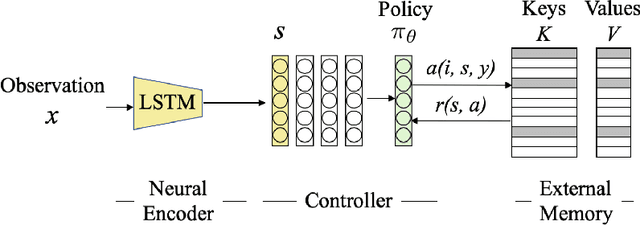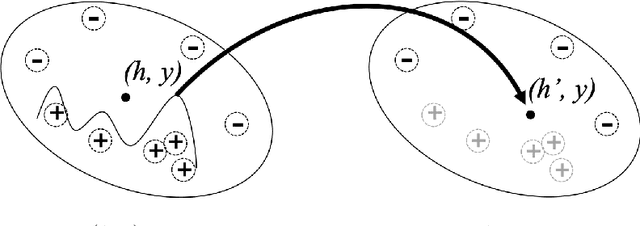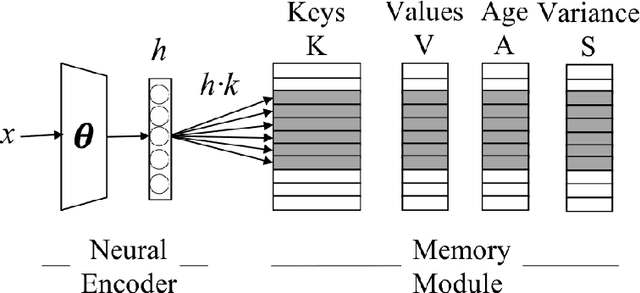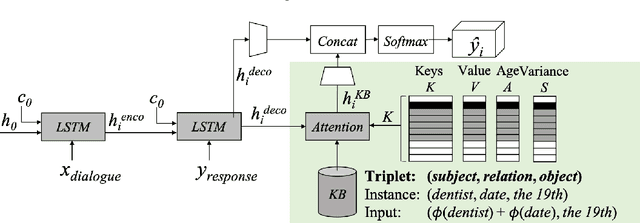Omar U. Florez
Learning to Control Latent Representations for Few-Shot Learning of Named Entities
Nov 19, 2019

Abstract:Humans excel in continuously learning with small data without forgetting how to solve old problems. However, neural networks require large datasets to compute latent representations across different tasks while minimizing a loss function. For example, a natural language understanding (NLU) system will often deal with emerging entities during its deployment as interactions with users in realistic scenarios will generate new and infrequent names, events, and locations. Here, we address this scenario by introducing an RL trainable controller that disentangles the representation learning of a neural encoder from its memory management role. Our proposed solution is straightforward and simple: we train a controller to execute an optimal sequence of reading and writing operations on an external memory with the goal of leveraging diverse activations from the past and provide accurate predictions. Our approach is named Learning to Control (LTC) and allows few-shot learning with two degrees of memory plasticity. We experimentally show that our system obtains accurate results for few-shot learning of entity recognition in the Stanford Task-Oriented Dialogue dataset.
Aging Memories Generate More Fluent Dialogue Responses with Memory Networks
Nov 19, 2019



Abstract:The integration of a Knowledge Base (KB) into a neural dialogue agent is one of the key challenges in Conversational AI. Memory networks has proven to be effective to encode KB information into an external memory to thus generate more fluent and informed responses. Unfortunately, such memory becomes full of latent representations during training, so the most common strategy is to overwrite old memory entries randomly. In this paper, we question this approach and provide experimental evidence showing that conventional memory networks generate many redundant latent vectors resulting in overfitting and the need for larger memories. We introduce memory dropout as an automatic technique that encourages diversity in the latent space by 1) Aging redundant memories to increase their probability of being overwritten during training 2) Sampling new memories that summarize the knowledge acquired by redundant memories. This technique allows us to incorporate Knowledge Bases to achieve state-of-the-art dialogue generation in the Stanford Multi-Turn Dialogue dataset. Considering the same architecture, its use provides an improvement of +2.2 BLEU points for the automatic generation of responses and an increase of +8.1% in the recognition of named entities.
On the Unintended Social Bias of Training Language Generation Models with Data from Local Media
Nov 01, 2019


Abstract:There are concerns that neural language models may preserve some of the stereotypes of the underlying societies that generate the large corpora needed to train these models. For example, gender bias is a significant problem when generating text, and its unintended memorization could impact the user experience of many applications (e.g., the smart-compose feature in Gmail). In this paper, we introduce a novel architecture that decouples the representation learning of a neural model from its memory management role. This architecture allows us to update a memory module with an equal ratio across gender types addressing biased correlations directly in the latent space. We experimentally show that our approach can mitigate the gender bias amplification in the automatic generation of articles news while providing similar perplexity values when extending the Sequence2Sequence architecture.
 Add to Chrome
Add to Chrome Add to Firefox
Add to Firefox Add to Edge
Add to Edge